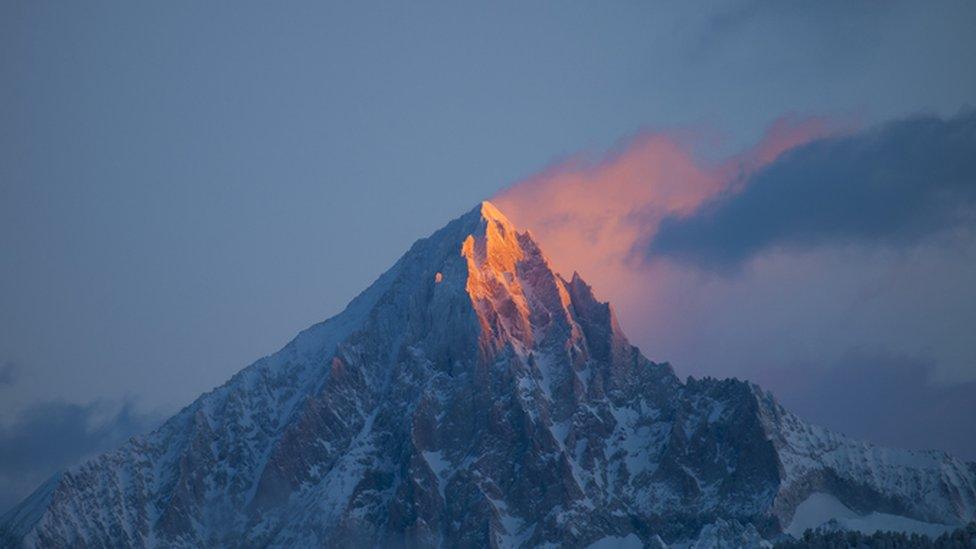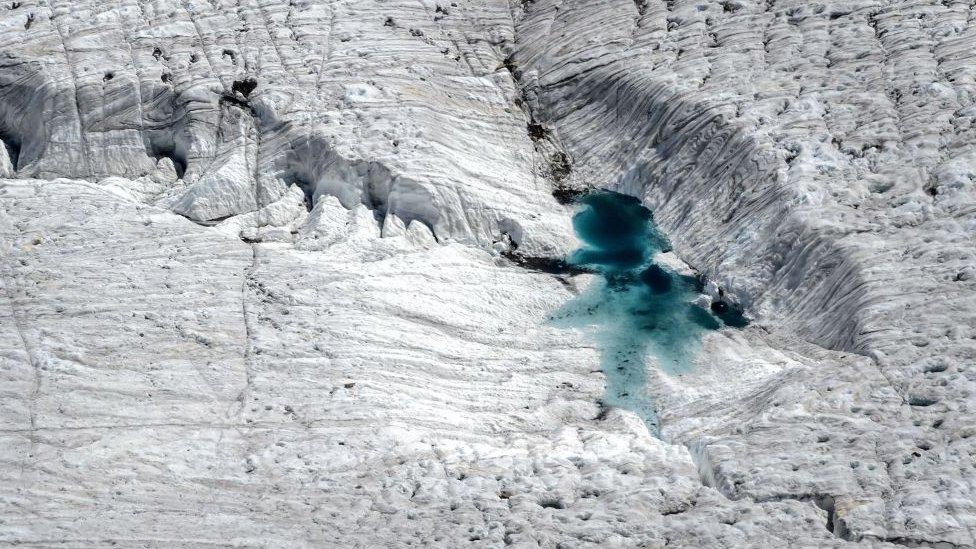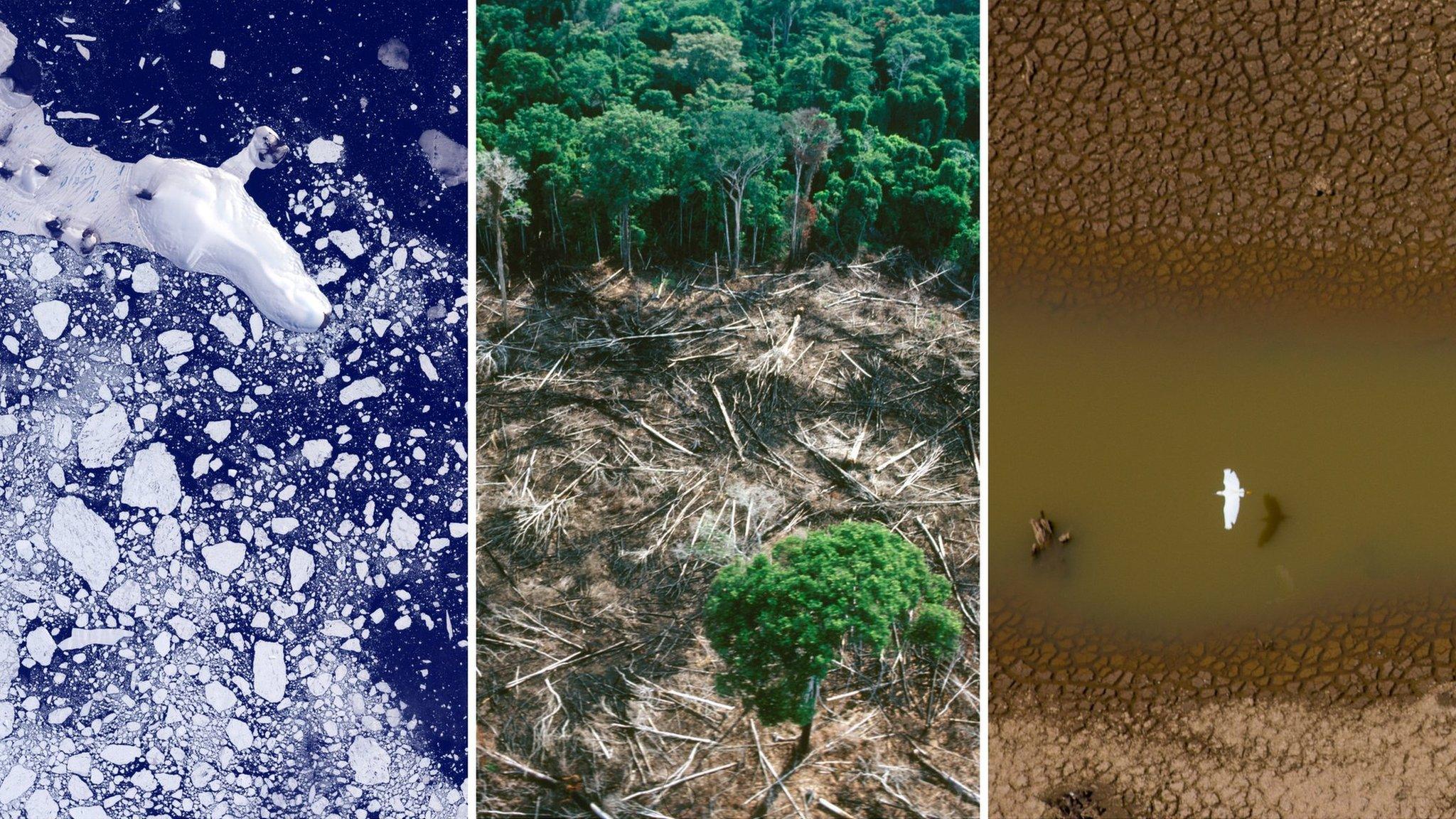Climate change: Glaciers in Switzerland lost half their volume in 80 years
- Published
- comments

Switzerland's 1,400 glaciers have lost more than half their total volume since the early 1930s, a new study has found.
Glaciers are huge bodies of ice that usually form from compacted snow.
Using historical images, a team of researchers from the university ETH Zurich and the Swiss Federal Institute for Forest, Snow and Landscape Research WSL worked out how much glaciers in Switzerland have melted.
The researchers estimated that ice on the glaciers had shrunk by half in the 85 years between 1931 and 2016.
Since 2016, they say, the glaciers have lost an additional 12% volume.
The researchers were able to analyse thousands of images gathered from 1916 to 1947.
As the images of different glaciers were from different periods of time, the researchers chose 1931 and calculated the average for that year.
By studying these images gathered by the Swiss National Survey, today called Swisstopo, the team could analyse and compare the topography, the shape and features of the glaciers.
"If we know the surface topography of a glacier at two different points in time, we can calculate the difference in ice volume," explains lead author Erik Schytt Mannerfelt of ETH Zurich and WSL.
'Not equally affected'

The Alps mountain range form part of France, Switzerland, Italy, Liechtenstein, Austria, Germany, and Slovenia
The study, which was published in a science journal called the Cryosphere, discovered not all glaciers were equally affected.
The amount of ice lost depends on how high a glacier is, how flat its lowest part, the 'snout' is and the amount of debris on the glacier.
Researchers also found that in the 1920s and 1980s there were periods when the glaciers actually grew.
Despite this, the overall picture is significant ice loss: While glaciers lost half their volume between 1931 and 2016, they lost a further 12 percent between 2016 and 2021 - i.e. in just six years.

Water on a melting glacier next to Gorner ridge on the Swiss alps
Glaciers are melting because of rising global temperatures.
Scientists say measuring glacier loss helps monitor the impact of climate change.
"Closely observing this phenomenon and quantifying its historical dimensions is important because it allows us to infer the glaciers' responses to a changing climate," says Daniel Farinotti, Professor of Glaciology at ETH Zurich and WSL, and co-author of the study.
- Published20 January 2020

